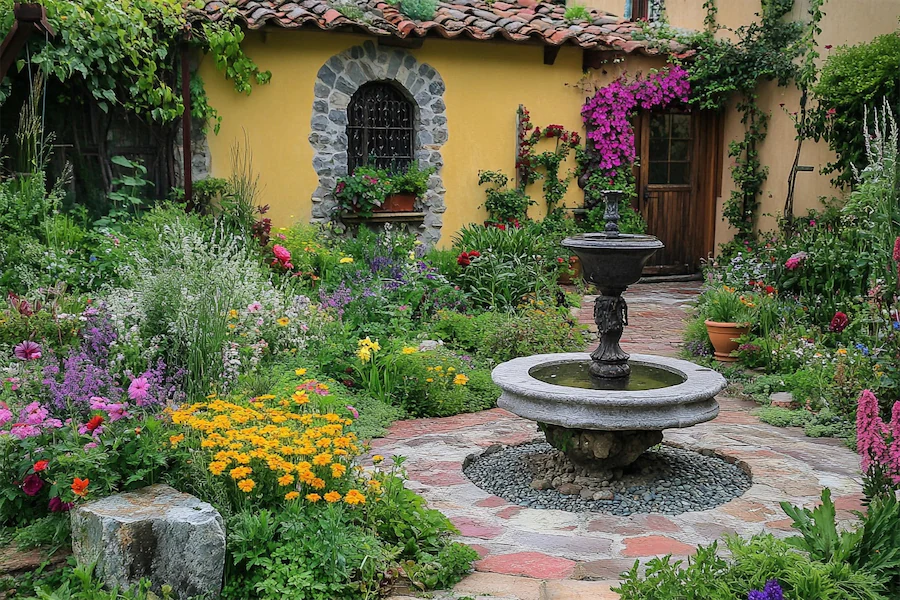A Tuscan Villa Garden embodies the rustic elegance and timeless beauty of Italy’s Tuscany region, featuring harmonious designs that blend natural elements with architectural features.
History and Origins of Tuscan Villa Gardens
Tuscan villa gardens trace their roots to the Renaissance period, where they were designed to complement the grandeur of the villas and the surrounding landscape. Notable examples include the gardens of Villa Gamberaia, renowned for their unique design and historical significance.
Key Features of Tuscan Villa Gardens
- Natural Materials: Utilizing materials like stone, gravel, and terracotta adds warmth and authenticity to the space. Stone pathways and terracotta pots are common elements that contribute to the rustic charm of Tuscan gardens.
- Drought-Tolerant Plants: Incorporating plants such as lavender, rosemary, olive trees, and cypress not only adds color and fragrance but also ensures the garden is sustainable and low-maintenance. These plants are well-adapted to dry conditions and provide a lush, vibrant aesthetic.
- Water Features: Incorporating fountains or small ponds introduces the soothing sound of water, enhancing the tranquil atmosphere and providing a cooling effect during hot days. Traditional Tuscan gardens often feature simple, elegant water features as focal points.
- Shaded Seating Areas: Creating comfortable spaces for relaxation and socializing is central to Tuscan garden design. Features like pergolas draped with climbing plants or strategically placed umbrellas offer relief from the sun and define areas for dining or lounging.
Applications of Tuscan Villa Gardens
- Residential Spaces: Homeowners can transform their patios or backyards into Tuscan retreats by integrating appropriate plants, materials, and furnishings. This design approach extends the living area outdoors, creating a seamless flow between indoor and outdoor spaces.
- Urban Settings: Even in limited spaces like balconies or small courtyards, adopting Tuscan design elements can create a refreshing oasis. Utilizing vertical space with climbing plants and selecting compact, container-friendly species allows for a lush garden feel without requiring extensive ground area.
Considerations When Creating a Tuscan Villa Garden
- Climate Compatibility: While Tuscan plants are drought-tolerant, it’s essential to consider local climate conditions. In regions with higher humidity or colder winters, selecting hardy plant varieties or providing protection during adverse weather is crucial. For example, English lavender (Lavandula angustifolia) is more cold-hardy than other varieties.
- Soil Preparation: Ensuring well-draining soil is vital for the health of Tuscan plants. Amending heavy soils with sand or gravel can improve drainage and mimic the natural growing conditions of these species.
- Maintenance: Although designed for low maintenance, periodic tasks such as pruning, deadheading, and monitoring for pests will keep the garden looking its best. Regularly trimming plants like lavender and rosemary encourages bushier growth and prolongs their lifespan.
Conclusion
A Tuscan Villa Garden offers a harmonious blend of beauty and functionality, providing a serene outdoor space that reflects the timeless appeal of Tuscany’s landscapes. By thoughtfully selecting plants and materials suited to the local environment, one can create a sustainable and inviting garden that serves as an extension of the home, perfect for relaxation and social gatherings.
